► New Mercedes-AMG GT driven
► Bigger and heavier, but more capable
► Range starts off with V8-powered GT63
For the AMG faithful, there’s been a fair bit of nail-biting going on in the run-up to the launch of this new AMG GT.
After all, the hyped four-cylinder AMG C63 E-Performance had fallen short of expectations, early SLs turned out to be poorly packaged and dynamically somewhat off-kilter efforts, the AMG versions of the EQE and EQS were not the sub-brand’s brightest stars either.
To add to this concern, this new GT was announced weighing a hefty 270kg more than its predecessor, and it had swapped the coveted transaxle layout for a less charismatic all-wheel drive chassis. We’ve driven it in the Sierra Nevada where God practiced creating The Perfect Corner
So, what has AMG done with the new GT?
The newcomer’s power output of 577bhp from a twin-turbo 4.0-litre V8 does match the GT R built from 2017 to 2021, but length, width, height and wheelbase have all gone up substantially and, although the all-wheel drive model is four tenths quicker off the mark, the WLTP fuel consumption has increased by over 20percent. Sometimes, progress comes in strange shapes and sizes.

Like the SL it shares its basic DNA with, the GT is on paper a 2+2-seater, but don’t let the type approval police catch you carrying rear passengers over five feet tall. That said, the new shape and hatchback boot opening means the boot volume went up by 175 to a much more generous 321 litres. With the optional rear bench folded, a cavernous cubicle awaits up to 675 litres of stowage. Perhaps the biggest packaging-related difference between old and new is the driving position which was brought a full 200mm forward in a car that has grown 177mm in length. The effect is like switching from sulky to saddle: you feel much more in control now because the axle- to-dash ratio is less bridge-to-bow like, and moving the driver closer to the action also improves the front visibility.
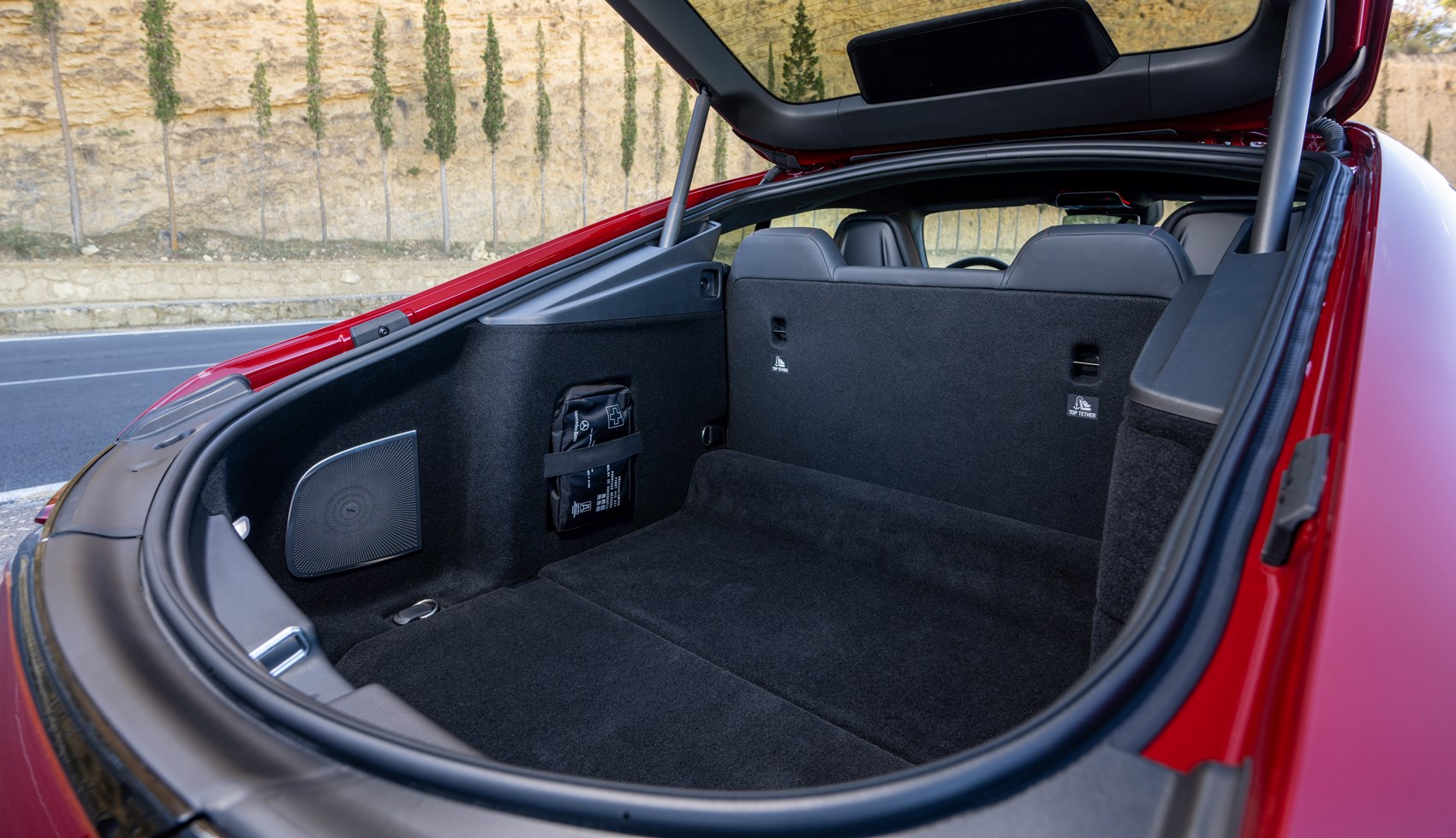
Does it look like an SL inside?
At a glance? Yes. But closer inspection reveals that the GT offers additional bespoke colours, eight different screen designs and seven shades of soft nappa leather. It’s a beautifully made and lavishly appointed interior, no doubt about that. But compared to the minimalist SLS launched in 2009, the dashboard of the 2024 GT comes as a bit of a software-powered culture shock dreamt up by the world’s most creative designers, engineers, programmers and suppliers.
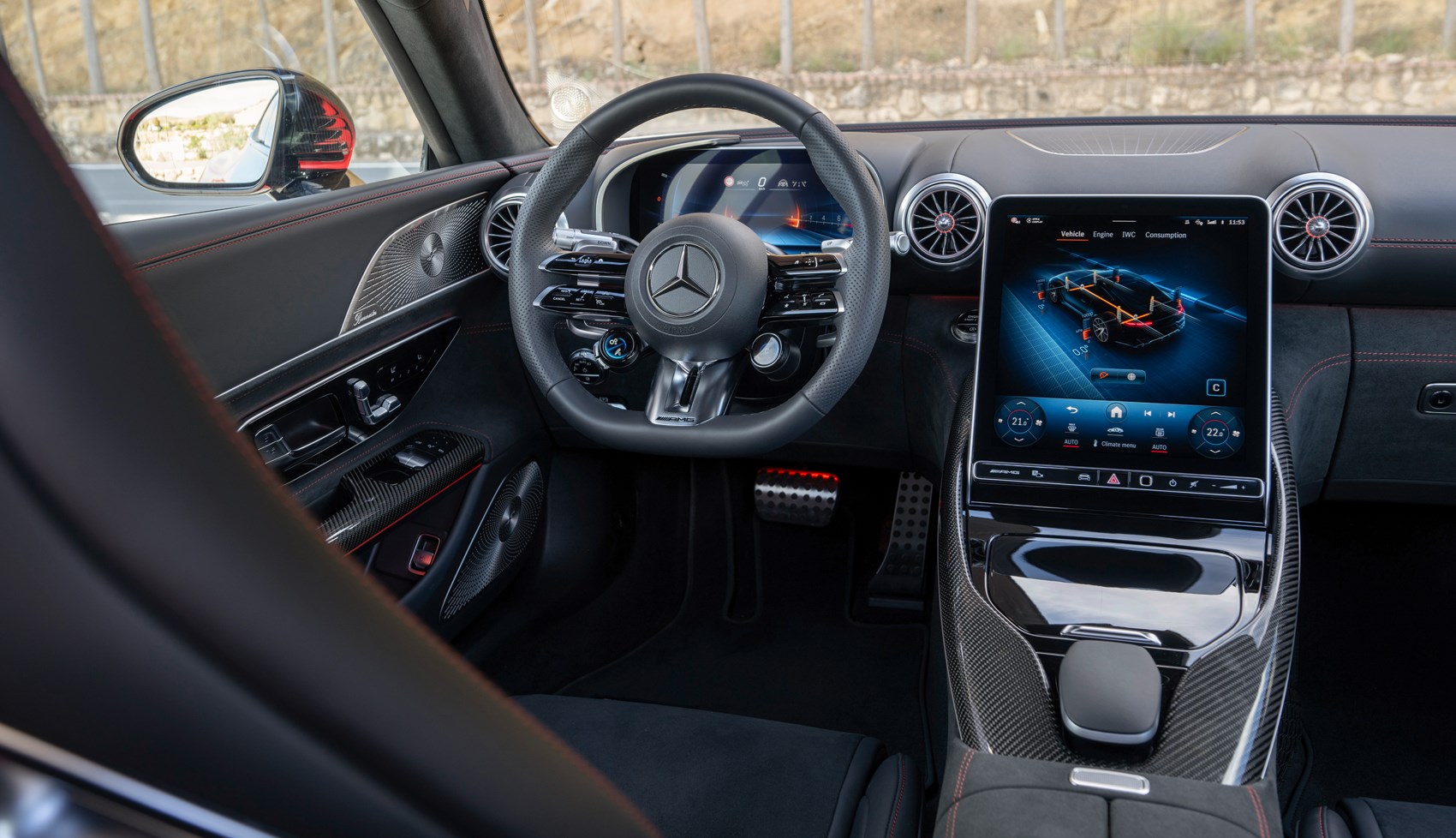
Facing three displays and the most complex steering-wheel outside the Mercedes W14 F1 racer is one thing, getting a hang of the omni-present digital gist is another. After all, there are six driving programmes to choose from (Ice, Comfort, Sport, Sport+, Race, Individual) plus four different drivetrain calibrations (Reduced, Moderate, Sport, Dynamic), four AMG Dynamic Select options (Basic, Advanced, Pro and Master), three ESP options (On, Off, Sport Handling), and of course AWD or RWD, Launch Control and Drift mode. When you don’t feel like playing, cylinder deactivation and lift-off coasting briefly flash the green flipside of the AMG medal.
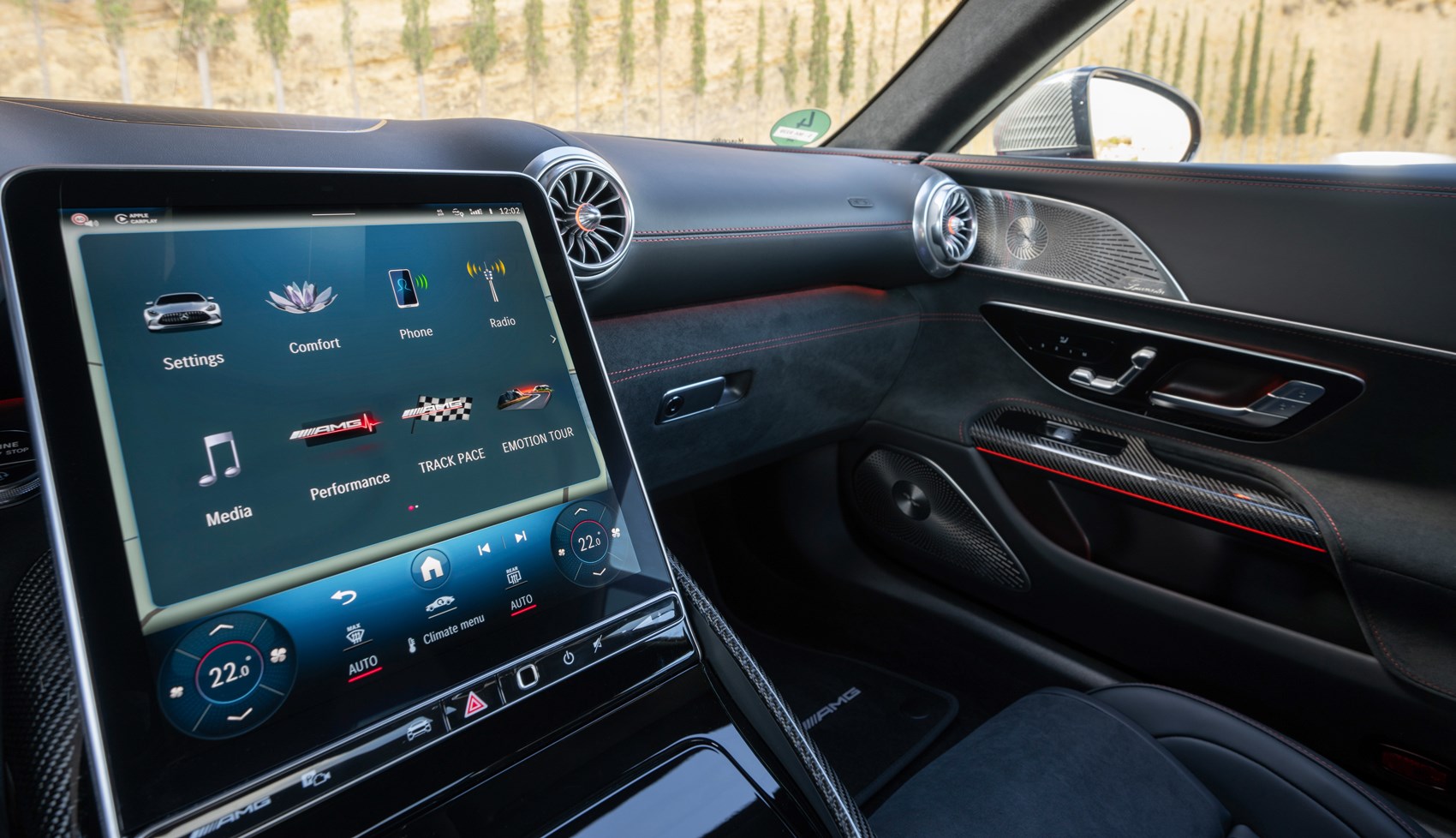
Almost every other key trait can however be tuned in various strengths and flavours within the bigger picture coordinated by a black box which masterminds the front- and rear-wheel steering, engine and transmission, ESP/ASR/ABS and four-wheel drive, dampers and exhaust, not to forget the adaptive aerodynamics and the available front axle lift. The list of mix and match configurations runs over many pages, and it’s surprisingly easy to get the set-up wrong because not everything that’s desirable is actually doable without triggering a negative side-effect or two. Take for instance the relatively heavy steering which feels notably lighter and more agile in Basic, but since Basic won’t let you fully exploit other sportier vehicle characteristics which only come to life in Pro and Master, you better leave the steering alone and stop grumbling.
Grumbling stopped – how does it drive?
The 0-62mph acceleration is a rorty 3.2sec blitzkrieg won thanks to the liquorice-meets-superglue compound of the latest Michelin Pilot 5S tyres and the all-wheel drive system which reverses the previous rear-bias 46/54 weight distribution without any grip or traction trade-offs whatsoever.
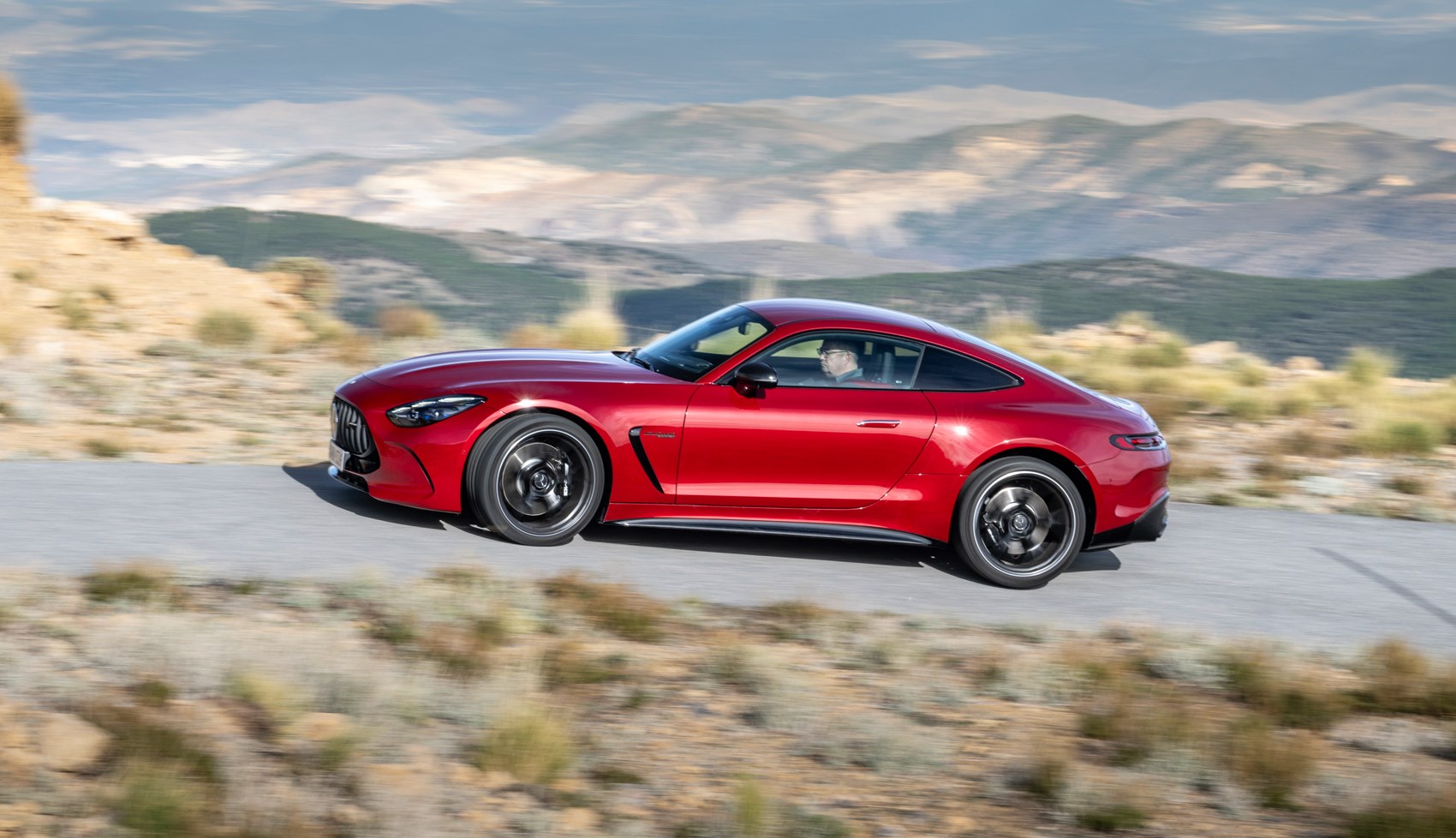
Although the rear wheels can steer at up 2.5deg, the turning circle is an embarrassing all-embracing 12.5metres against 10.9metres for the 911 turbo and 11.5metres for the previous GT R. The Coke-bottle silhouette and the extra-wide footprint collects plenty of likes from trendy city slickers, but when, in the middle of nowhere, one blind corner starts chasing the next, steering precision and non-negotiable grip are of the essence. The GT delivers on all blacktops by fusing ferocious front-end bite with tenacious roadholding and awesome exit traction. You can play hooligan whenever you feel like it, but carving a clean flowing line is ultimately more rewarding because that way the 1970kg GT will carries very nearly as much speed and momentum through corners as the best certified sports cars.
What about when you’re really on it?
Then it’s time for Dynamic Select in Race, ESP in Sport Handling, the dampers in Sport, Dynamic Select in Master mode and the transmission in Manual with no need at all for gears number six, seven and eight. But even with all systems on max attack, the upshifts were still not whiplash brutal, the ride retained a reassuring margin of compliance, the keen steering connected with aplomb, and although the life rear end went through all the angry motions like Dan the Doberman, it didn’t bite.
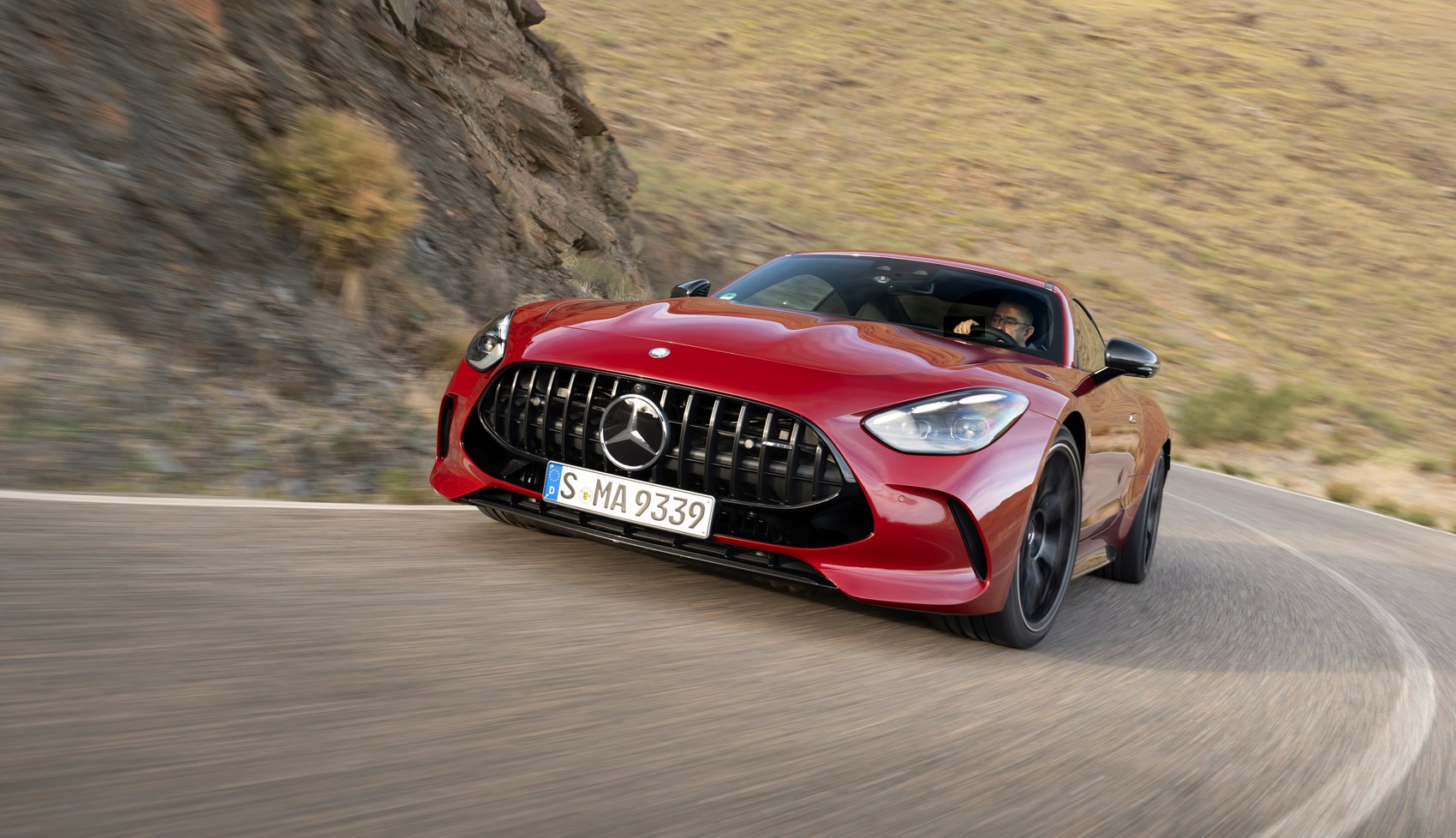
Going ten tenths on tricky unfamiliar roads that can derail you with an impromtu dusting of fine sand or by dumping a small rock on the racing line is always more about confidence and that sixth sense than talent and courage. There is always plenty of warning before the limit of adhesion is reached, and if you’re deaf on that ear, the car typically supports catch & release over crash & grieve. We tried the steel brakes which are about as good as these things ever get, but if you are notorious for never reversing thrust before overshooting the apex of every bastard bend en route, then the carbon-fibres stoppers are definitely worth the extra eight grand or so.
Mercedes-AMG GT: verdict
Thankfully, Mercedes-AMG has put our worries to rest: it’s latest AMG GT is a good car and thus a big relief. The new AMG GT oozes confidence from every aluminium and carbon fibre pore because its reassuringly wide comfort zone is not tailored for Hamilton & Russell but for you & me.